NCCI Edits: An Ultimate Guide
Let’s go over what NCCI edits are, the different types, and why they are important. Plus, we address the proper usage of modifiers while keeping the NCCI program in mind.
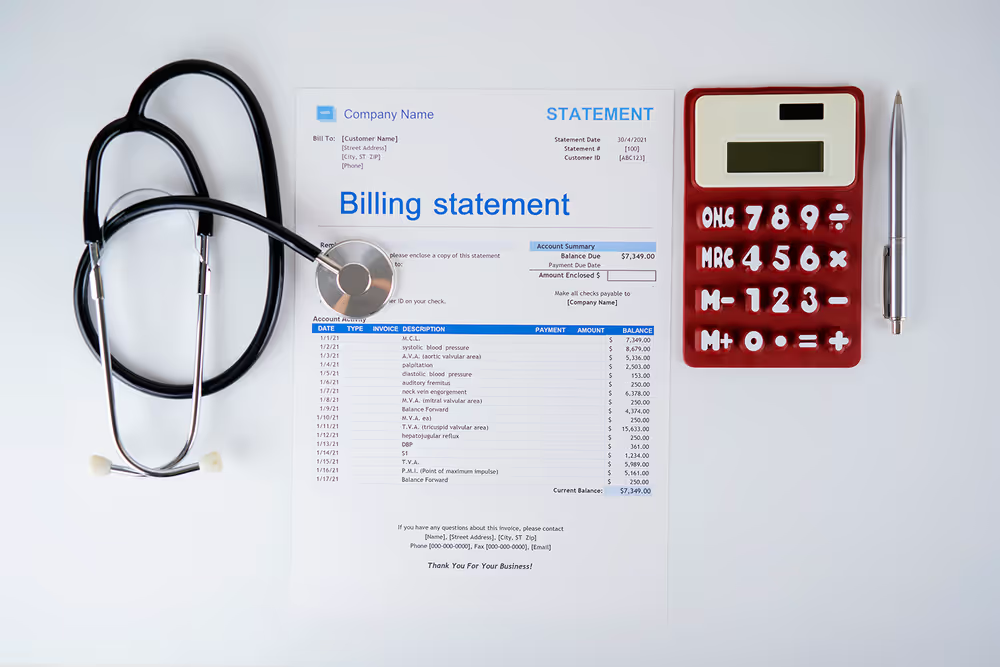
Did you know that medical billing errors account for approximately $68 billion in unnecessary healthcare costs annually? There’s nothing like working hard on coding a claim, thinking you got it all perfect, just to have it sent back as a denial right? So fun… you can’t hear it, but I am being sarcastic.
No of course we don’t want any claim denials! After all, the lower your claim denial rate, the more financially stable your business is. So understanding the ins and outs of medical coding and billing are of the utmost importance here. Being able to accurately document services and procedures rendered during a visit can be the difference between receiving revenue on time or not.
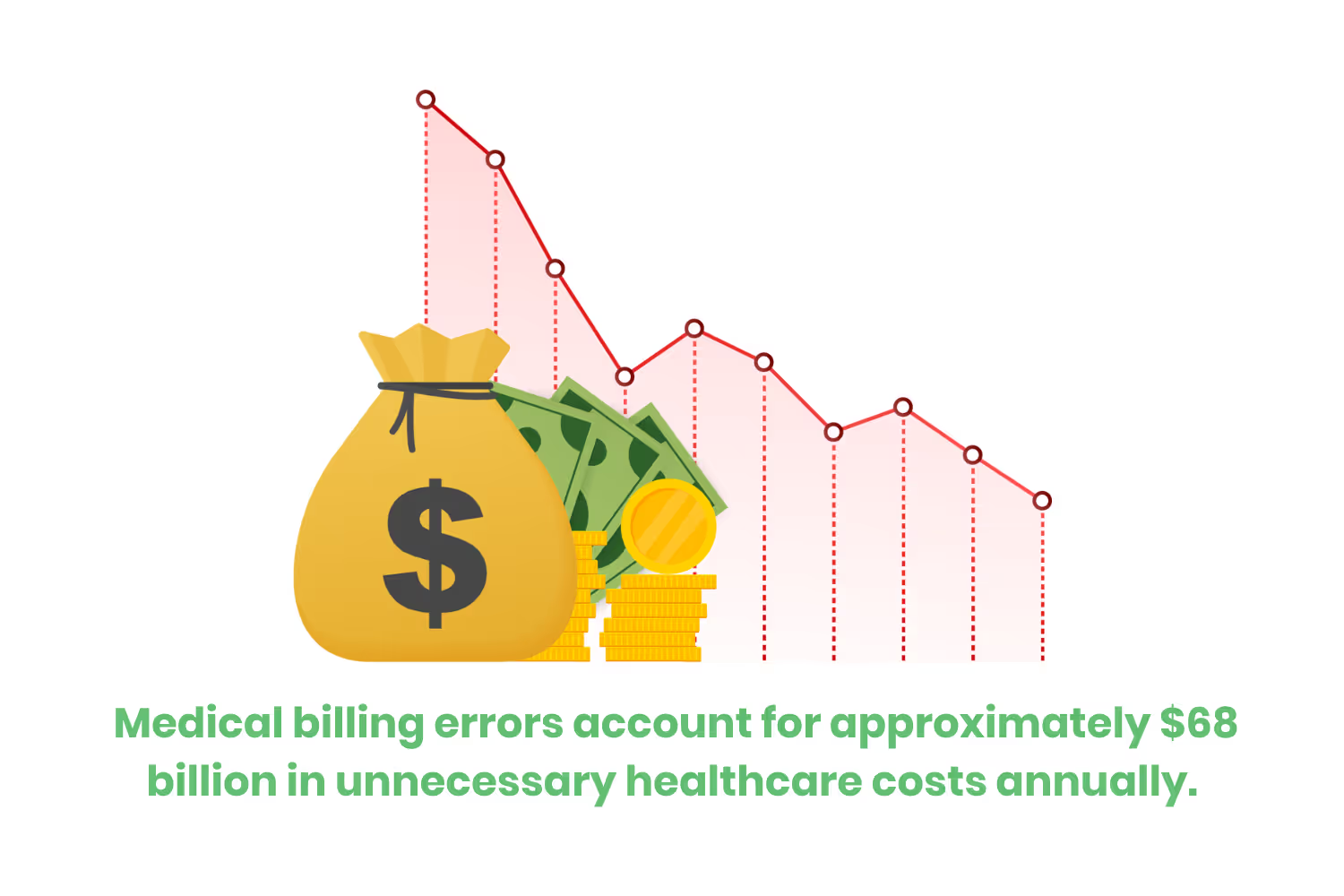
Education and training are arguably the most important tools you can bestow upon your billing team when it comes to avoiding claim denials. I’ve said it a million times and I’m not afraid to say it again, prevention is the best medicine. If you know how to avoid a pesky claim denial, then that saves you time and money.
There are a few aspects of billing and coding that do get… well, pretty convoluted to say the least. One of them being National Correct Coding Initiative (NCCI) edits. Today, let’s go over what NCCI edits are, the different types, and why they are important. Plus, we address the proper usage of modifiers while keeping the NCCI program in mind.
What are NCCI edits?
The NCCI is a program under the Centers for Medicare & Medicaid Services (CMS), which houses specific coding policies and edits. The CMS owns this program, deciding any decisions regarding the rules and regulations within. They base the coding policies on the content in the American Medical Association’s Current Procedural Terminology (CPT) Manual. As well as national and local policies/edits.
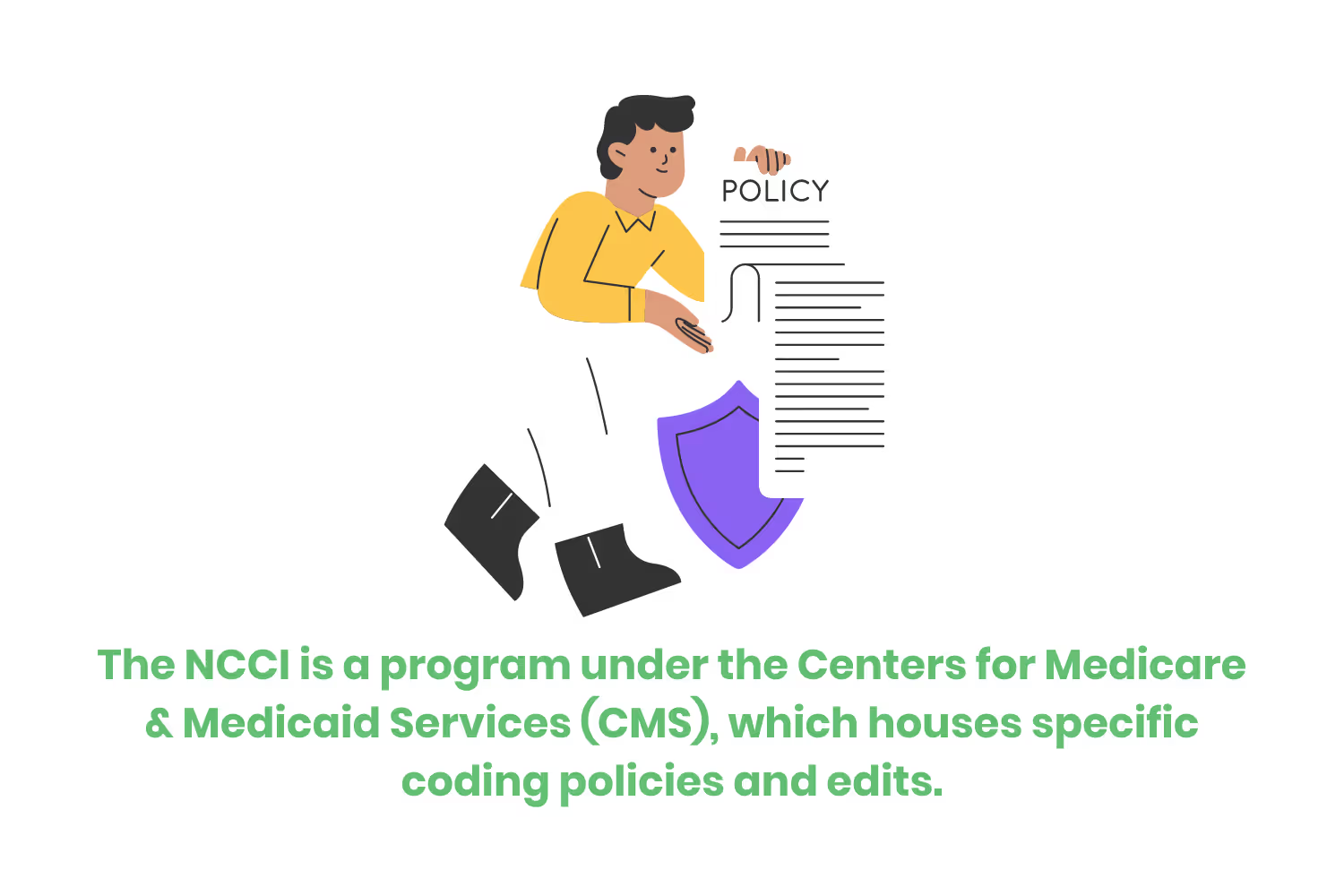
Other sources of information taken into consideration by the CMS include:
- Coding guidelines developed by national societies
- Analysis of standard medical and surgical practices
- Review of current coding practices.
Originally formed in January of 1996, the purpose of the NCCI is to prevent improper coding. More specifically, to reduce instances of duplicate codes and ensure services rendered are medically appropriate. It promotes the national correct coding of Medicare Part B claims. Medicare Part B tends to take care of medically necessary services and preventative services. Some examples might include outpatient office visits or same-day surgery.
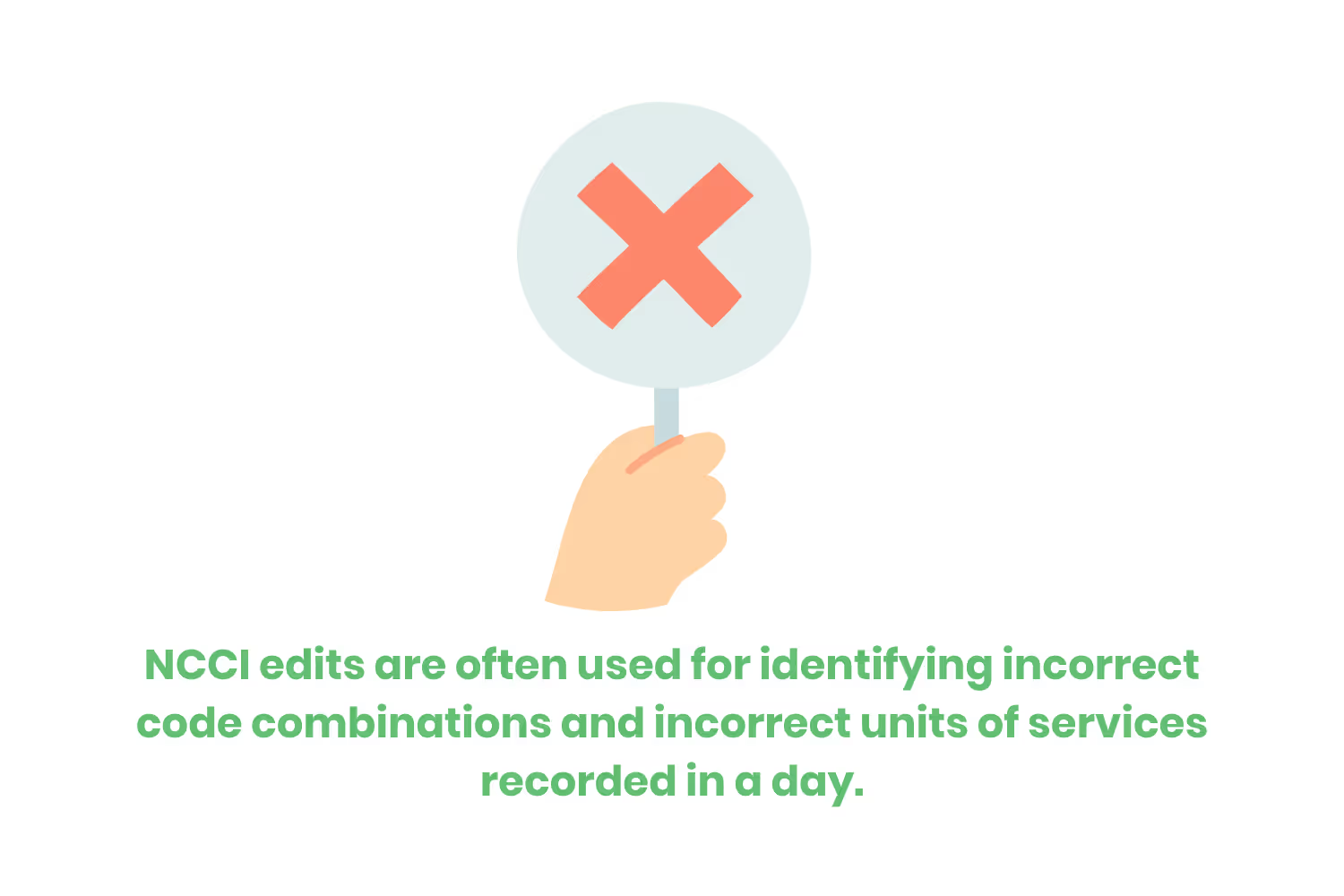
It was in 2010 that the Affordable Care Act required CMS to notify states that Medicaid is compatible with all five Medicare NCCI methodologies. Today, NCCI edits are essential when processing both Medicare and Medicaid claims.
NCCI edits are often used for identifying incorrect code combinations and incorrect units of services recorded in a day. This is where things can get a little confusing, as both of these edits get broken down into two separate categories.
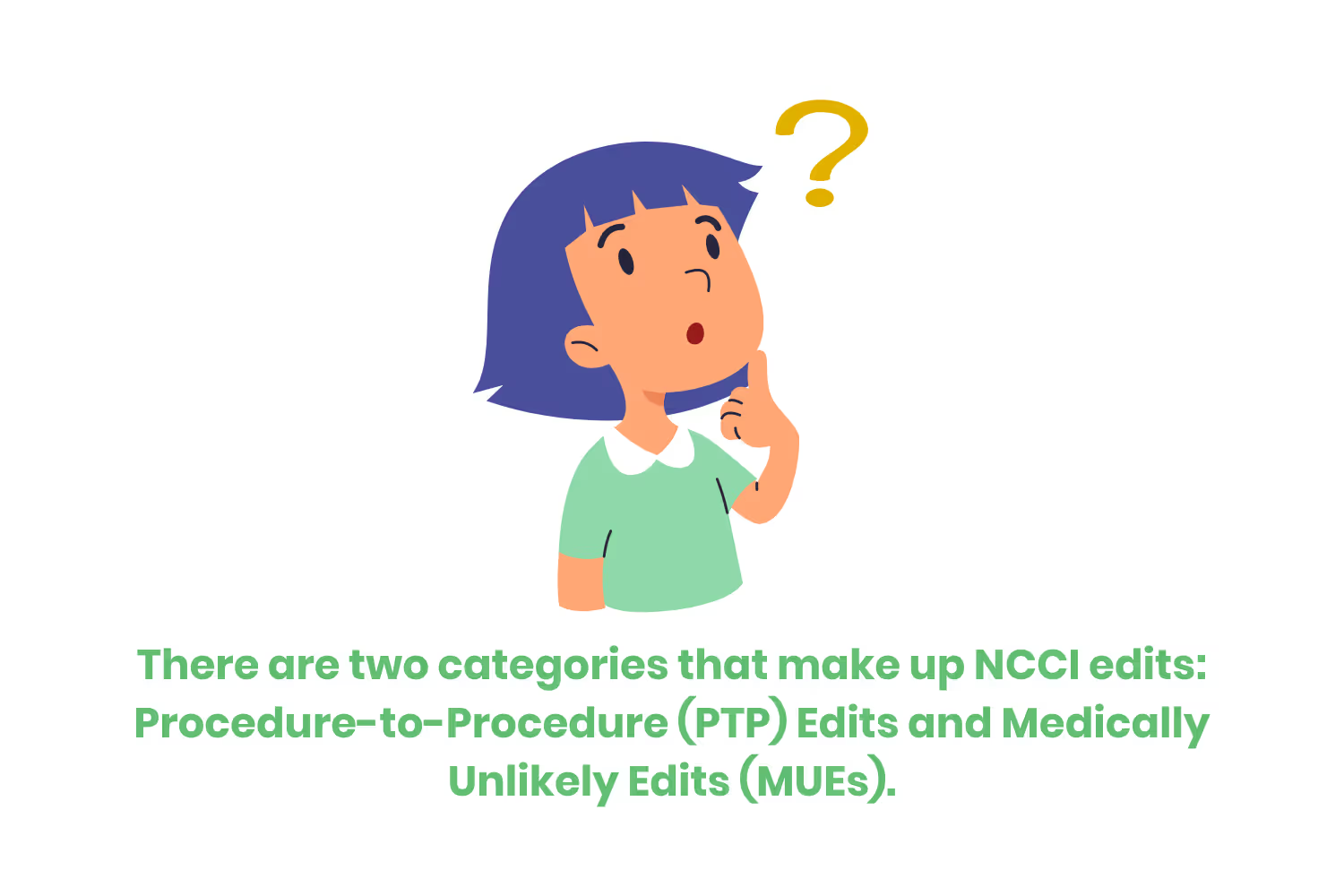
Types of NCCI Edits
Two categories that makeup NCCI edits: Procedure-to-Procedure (PTP) Edits and Medically Unlikely Edits (MUEs). PTP prevents the inappropriate payment of services that you should not bill together. While MUEs cover the services that you should not bill over a certain amount. Let’s dig into this subject even further by continuing to break both of these terms down.
Procedure-to-Procedure
PTP edits, as I said, help to prevent providers from reporting incorrect payment of services together. The NCCI includes one table of edits for physicians or practitioners. They include another table of edits for outpatient hospital services. Column one for HCPCS, and Column two for CPT. For reference, HCPCS stands for Healthcare Common Procedure Coding System and CPT stands for Current Procedural Terminology.
If a report includes two codes of an edit pair on the same date of service, for the same beneficiary, only Column one code is eligible for payment. On the other hand, the column two code is then denied. That is unless proven clinically appropriate. The provider must then utilize the correct NCCI PTP-associated modifier.
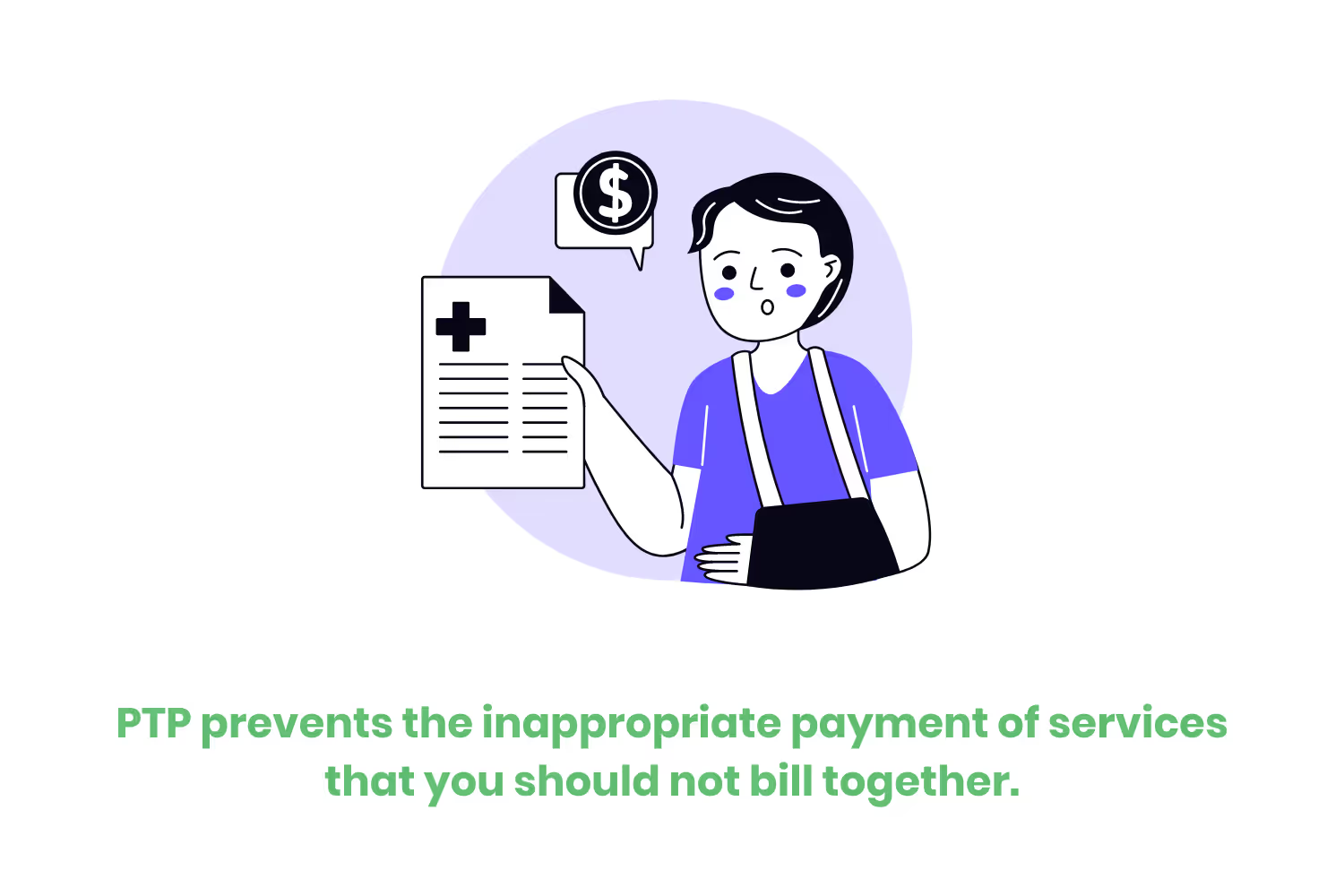
A great example is when a patient receives surgery, the closure of the wound for that surgery is inherently included in the billing. You do not need to also bill separately for closing the wound on top of billing for the surgery.
PTP edits get updated at least every quarter. These changes include additions, deletions, and modifier indicator alterations. There is also no set period for how long PTP edits are valid.
Medically Unlikely Edits
An MUE is a unit of service edit for HCPCS and CPT codes. More specifically, for the maximum number of units you would bill for a service rendered by a single provider, and for a single beneficiary, in a day. These MUEs help to reduce errors when it comes to clerical entries and any incorrect coding based on the following criteria:
- Anatomic considerations.
- HCPCS/CPT code descriptors.
- CPT coding instructions.
- Established CMS policies.
- Nature of a service/procedure.
- Nature of an analyte.
- Nature of the equipment.
- Prescribing information.
- Claims data.

Understanding how this edit works can help your practice reduce your paid claims error rate for Medicare claims. MUEs either adjudicate as claim line edits or date of service edits and note that not all HCPCS/CPT codes have an MUE. Let’s talk more about what happens when an MUE is a claim line edit. If it is, you adjudicate each line of a claim against the MUE value for the HCPCS/CPT code on that claim line.
If the units of service are higher than the MUE value, all services for that claim line face denial. There may be instances when the same code appears on more than one line using CPT modifiers. In this case, you adjudicate each line separately against the MUE value of the code on that claim line.
Looking at the date of service MUEs, all units of service for the code reported by a single provider, for the same patient, and the same date exist in the final value. That summoned value is then compared to the MUE value. If the sum is larger than the MUE value, units of service for that code face denial.
Conclusion
In medical billing and coding, there is little room for error. The stakes are high when it comes to making sure your claims are correct before sending them to the payer. Even the smallest mistake can result in claim denials, which delay the collection of revenue.
NCCI edits are helpful in the fight against coding errors. That’s why medical billing professionals stress education and training on the subject. As important as it is to understand this topic, it can be just as frustrating too. Keeping up with all of the codes, edits, and modifiers needed can be tricky. Even for the most seasoned professional!
Continuing this education throughout your professional career is going to be essential to avoid feeling overwhelmed. And an ally in reducing claim denials. Thus, ensuring the financial stability of your practice. Always keep the date of service in mind while providing any edits or modifiers to ensure accurate billing. Also, be sure to utilize the policy manual on the CMS website to stay informed about the latest NCCI edits and regulation updates.
You can also prevent overpayments and even potential fraud by ensuring that you correctly bill services. This not only protects your practice but your patients as well. Compliance isn’t just about following rules. Billing correctly also saves you from having to deal with penalties, audits, and claim rejections. All roadblocks in the pursuit of staying financially healthy. Prevention is the best medicine, both when it comes to healthcare and your financial status.
Emphasize your product's unique features or benefits to differentiate it from competitors
In nec dictum adipiscing pharetra enim etiam scelerisque dolor purus ipsum egestas cursus vulputate arcu egestas ut eu sed mollis consectetur mattis pharetra curabitur et maecenas in mattis fames consectetur ipsum quis risus mauris aliquam ornare nisl purus at ipsum nulla accumsan consectetur vestibulum suspendisse aliquam condimentum scelerisque lacinia pellentesque vestibulum condimentum turpis ligula pharetra dictum sapien facilisis sapien at sagittis et cursus congue.
- Pharetra curabitur et maecenas in mattis fames consectetur ipsum quis risus.
- Justo urna nisi auctor consequat consectetur dolor lectus blandit.
- Eget egestas volutpat lacinia vestibulum vitae mattis hendrerit.
- Ornare elit odio tellus orci bibendum dictum id sem congue enim amet diam.
Incorporate statistics or specific numbers to highlight the effectiveness or popularity of your offering
Convallis pellentesque ullamcorper sapien sed tristique fermentum proin amet quam tincidunt feugiat vitae neque quisque odio ut pellentesque ac mauris eget lectus. Pretium arcu turpis lacus sapien sit at eu sapien duis magna nunc nibh nam non ut nibh ultrices ultrices elementum egestas enim nisl sed cursus pellentesque sit dignissim enim euismod sit et convallis sed pelis viverra quam at nisl sit pharetra enim nisl nec vestibulum posuere in volutpat sed blandit neque risus.

Use time-sensitive language to encourage immediate action, such as "Limited Time Offer
Feugiat vitae neque quisque odio ut pellentesque ac mauris eget lectus. Pretium arcu turpis lacus sapien sit at eu sapien duis magna nunc nibh nam non ut nibh ultrices ultrices elementum egestas enim nisl sed cursus pellentesque sit dignissim enim euismod sit et convallis sed pelis viverra quam at nisl sit pharetra enim nisl nec vestibulum posuere in volutpat sed blandit neque risus.
- Pharetra curabitur et maecenas in mattis fames consectetur ipsum quis risus.
- Justo urna nisi auctor consequat consectetur dolor lectus blandit.
- Eget egestas volutpat lacinia vestibulum vitae mattis hendrerit.
- Ornare elit odio tellus orci bibendum dictum id sem congue enim amet diam.
Address customer pain points directly by showing how your product solves their problems
Feugiat vitae neque quisque odio ut pellentesque ac mauris eget lectus. Pretium arcu turpis lacus sapien sit at eu sapien duis magna nunc nibh nam non ut nibh ultrices ultrices elementum egestas enim nisl sed cursus pellentesque sit dignissim enim euismod sit et convallis sed pelis viverra quam at nisl sit pharetra enim nisl nec vestibulum posuere in volutpat sed blandit neque risus.
Vel etiam vel amet aenean eget in habitasse nunc duis tellus sem turpis risus aliquam ac volutpat tellus eu faucibus ullamcorper.
Tailor titles to your ideal customer segment using phrases like "Designed for Busy Professionals
Sed pretium id nibh id sit felis vitae volutpat volutpat adipiscing at sodales neque lectus mi phasellus commodo at elit suspendisse ornare faucibus lectus purus viverra in nec aliquet commodo et sed sed nisi tempor mi pellentesque arcu viverra pretium duis enim vulputate dignissim etiam ultrices vitae neque urna proin nibh diam turpis augue lacus.



![[ANSWERED] What is a Long-Term Care (LTC) Pharmacy](https://cdn.prod.website-files.com/67e2b8210878abcba6f91ae6/68d687806a075a1cf64659b0_WhatisLongTermCarePharmacy_925.avif)
